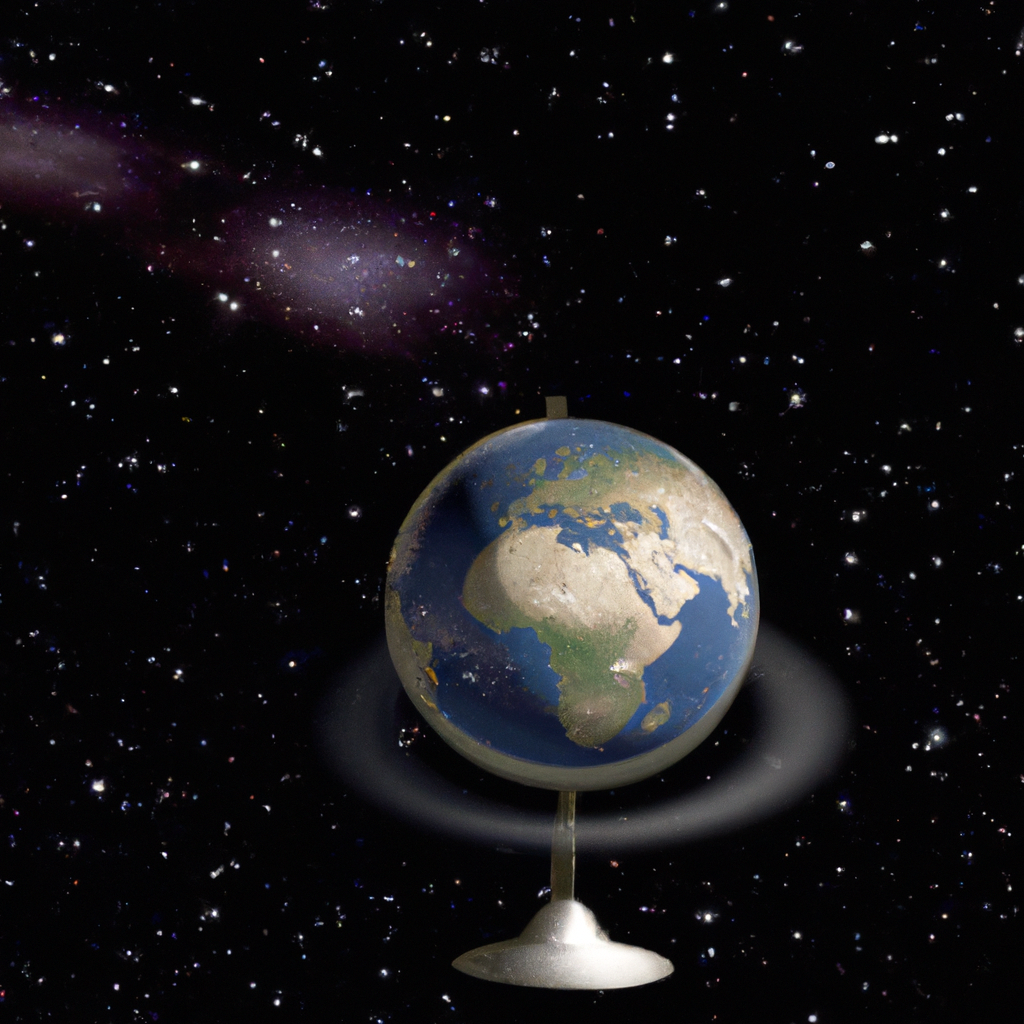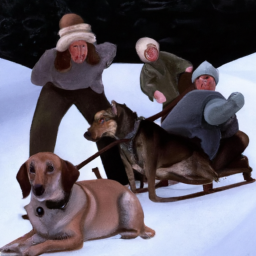Mastering the Art of World Creation in Storytelling
Explore the art of world building in storytelling, from the fundamental laws of your universe to the minute details of your landscapes. Understand how to create believable cultures and characters, contributing to immersive, engaging experiences for your readers.
Last Updated: 9/14/2023
Setting the Stage: The Art of World Building
Creating immersive storytelling experiences

World building is a crucial element in storytelling, a scaffolding upon which narratives are built. It involves the meticulous creation of an imaginary universe that can be as expansive as a galaxy in a sci-fi novel, or as localized as a small, fictional town in a murder mystery. The aim is to create a believable, and often relatable, setting where characters live and plots unfold.
World building adds depth and richness to the narrative, making it believable and engaging. It offers readers or viewers a chance to escape into a different reality, making them a part of the world that they are viewing or reading about. It engages the audience's imagination, making the experience more immersive and real.
Some of the most famous examples of world building can be seen in literature and film. The 'Middle Earth' from J.R.R. Tolkien's 'Lord of the Rings' series, or the 'Wizarding World' from J.K. Rowling's 'Harry Potter' series, are prime examples. These authors have created detailed and intricate worlds that have captivated audiences, making their books timeless classics. In film, one can look at the 'Star Wars' franchise, where George Lucas created a sprawling, intergalactic civilization with its own customs, languages, and political systems.
These examples demonstrate the power of world building in creating immersive storytelling experiences. It's not just about creating a backdrop for the story, but rather an integral part of the narrative itself. It shapes the characters, influences the plot, and leaves a lasting impression on the audience.
The Foundation: Laws of the Universe
Building a World Through Fundamental Rules

World-building is an integral part of storytelling. It's more than just creating landscapes and cityscapes; it's about establishing the fundamental laws of the universe. These laws form the backbone of the world and lay out its basic principles.
-
Establishing the Laws: The first step in world-building is defining the laws that govern your world. These could be the laws of physics as we know them, or they could be entirely new rules you've invented. These laws can include magic systems, technological rules, power hierarchies, or anything else that shapes the way your world functions.
-
Impacts on the Story: The laws you establish will greatly affect your story. They define what is possible and what is not. They constrain your characters' actions, shape the challenges they face, and influence the solutions they devise. Without these laws, your story may lack structure and consistency.
-
Impacts on Characters: Understanding the laws of the universe is crucial for your characters. These laws will shape their lives, their motivations, their conflicts, and their growth. For instance, a character living in a world where magic is a punishable crime will behave differently from one where magic is celebrated.
-
Consistency is Key: Once you've set your laws, stick to them. Consistency is important in maintaining the integrity of your world and the believability of your story. If you break your own rules, you risk losing your audience's trust.
In conclusion, the laws of the universe you create play a vital role in shaping the world, the story, and the characters. They lend credibility to your universe, influence the plot, and underpin the challenges and triumphs of your characters.
You Might Like..

Write a book - First time author writing guide
Yoanna

Writing Voice: The Complete Guide to Creating a Presence on the Page and Engaging Readers (Creative Writing Essentials)
Writer's Digest Books

Creating Character Arcs: The Masterful Author's Guide to Uniting Story Structure, Plot, and Character Development (Helping Writers Become Authors Book 7)
Details Matter: From Landscapes to Cityscapes
The Art of Describing Scenery in Writing

When it comes to storytelling, whether in literature, film, or even marketing, details matter. Particularly, the description of landscapes, cities, and other locations can make a world of difference in bringing a story to life. Not only does it create a vivid mental image for the readers or viewers, but it can also set the mood, reveal character traits, and even advance the plot.
The significance of describing landscapes, cities and other locations in detail lies in the following reasons:
- World Building: Detailed descriptions help in creating a believable and immersive world for the readers or viewers. It makes them feel as if they are part of the story.
- Setting the Mood and Atmosphere: The description of a place can set the tone for a scene. A gloomy forest, a bustling city, or a serene lake all evoke different emotions.
- Character Development: The way characters interact with their surroundings can reveal a lot about their personality, state of mind, and backstory.
- Plot Advancement: Sometimes, the location itself can play a crucial role in moving the plot forward.
Here are some tips to describe landscapes, cities, and other locations effectively:
- Be Specific: Instead of saying 'a city', say 'a bustling city with towering skyscrapers, neon lights, and crowded sidewalks'. Details paint a clearer picture.
- Use Sensory Details: Engage the reader's senses. Describe what characters see, hear, smell, touch, and taste in their surroundings.
- Show, Don't Tell: Instead of telling the reader that a landscape is beautiful, describe the blooming flowers, the majestic mountains, and the vibrant sunset.
- Use Metaphors and Similes: Comparing the setting to something else can help readers visualize it better.
- Avoid Clichés: Instead of falling back on familiar descriptions, strive to describe locations in unique and interesting ways.
Remember, the key to effective description lies in balance. While it's important to create a vivid picture, overly detailed descriptions can slow down the story's pace and bore the reader. The goal is to enhance the narrative, not overshadow it.
Characters and Culture: Making Your World Believable
Creating Believable Cultures and Characters

Creating a believable world in a story is just as important as plot progression and character development. A believable world adds depth to your narrative and makes it more immersive for your readers. Here's how to intertwine character and cultural development with world-building:
-
Character-centric World-building: Start your process by focusing on your characters. What kind of world would produce your characters? What societal norms, values, or traditions might have shaped them? Consider their personality traits and backgrounds when creating the culture of your world.
-
Consistency is Key: Consistency in your world's culture and characters is crucial for believability. Ensure that the characters' actions, dialogue and beliefs are in line with the culture and societal norms you've established.
-
Deep Dive into Culture: Think about real-world cultures and what makes them unique. Consider aspects like language, social hierarchy, traditions, and customs. Your fictional world should have these elements as well.
-
History and Mythology: History and mythology can greatly influence culture. Create a history for your world that has shaped its present culture. Myths and legends can also offer explanations for societal norms.
-
Societal Structure: Society's structure is determined by its economy, politics, and religion. Consider how these systems interact and how they might impact your characters' lives.
-
Conflict and Change: Just like the real world, your fictional world should not be static. Cultural shifts, conflicts, and changes in power dynamics can add depth to your world-building.
-
Details Matter: Small details can add a lot of depth to your world. The food people eat, the clothes they wear, the way they greet each other - these mundane details can make your world feel real and lived-in.
Remember, your world should not only serve as a backdrop for the action but also interact with your characters, influencing their actions and decisions. By intertwining character and cultural development with world-building, you can create a believable and captivating world for your readers.
You Might Like..

Creating Character Arcs: The Masterful Author's Guide to Uniting Story Structure, Plot, and Character Development (Helping Writers Become Authors Book 7)

Writing Fiction: The Practical Guide from New York's Acclaimed Creative Writing School
Bloomsbury USA

Writing Fiction: A Guide to Narrative Craft (8th Edition)
Pearson
Conclusion: The Art of Immersion
The Power of Effective World Building in Storytelling

Throughout this discussion, we have delved deep into the art of effective world building and its crucial role in creating immersive, engaging storytelling. It's clear that the ability to craft intricate, believable worlds can elevate a story, making it more compelling and resonating with readers on a deeper level.
World building is more than just creating physical settings. It's about concocting history, culture, and social norms that shape the characters and their actions. This intricate detailing not only enhances the plot but also makes the readers feel like they are part of the story, experiencing the world through the eyes of the characters.
World building stimulates the imagination. The more detailed and well-thought-out a world is, the richer the reader's visual palette. This depth of imagination helps readers become more emotionally invested in the story, increasing their engagement.
World building can create a sense of wonder. By introducing elements that defy reality, like magic or advanced technology, world building can captivate readers with the allure of the unknown and the impossible.
World building can drive the plot. The circumstances and rules of the world can create conflict, pose challenges, and shape the character's journey, adding layers to the plot.
In conclusion, world building is an essential tool in the craft of storytelling. As we've seen, it contributes significantly to creating an immersive experience that captivates the reader. I encourage all aspiring storytellers to experiment with their own world building techniques, to not only create fascinating worlds but also to tell richer, more engaging stories. Remember, the only limit is your imagination!
Related Content

I Got An AI To Write 40000 articles for me.
WOAHere's What Happened.

Crazy Benefits for Business Owners
COOLSUPER intersting article about asdfasdf asdf asdf asdf

FIrst Article
COOLSUPER intersting article about asdfasdf asdf asdf asdf

I Got An AI To Write 40000 articles for me.
WOAHere's What Happened.

Crazy Benefits for Business Owners
COOLSUPER intersting article about asdfasdf asdf asdf asdf

Web Developers HATE him
COOLSUPER intersting article about asdfasdf asdf asdf asdf
theme: light
debug: engagement blocks: 0
debug: content blocks: 6
pageTop: 0 pageMiddle 3 pageBottom 5
Debug Info:Title: Mastering the Art of World Creation in Storytelling Slug: mastering-the-art-of-world-creation-in-storytelling
Total Content Blocks: 6
Debug Info: AMAazon products length 8
Debug Info: AD Level full_ads
showAmazonAds: true
showPagesakeAds: true
showContentNetwork: true
showMiscReferralAds: true
Pagebuilder Seed: 23